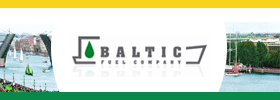IMO agrees draft revised Guidelines for the reduction of underwater noise from commercial shipping

Draft revised Guidelines for the reduction of underwater noise from commercial shipping to address adverse impacts on marine life have been agreed by the IMO Sub-Committee on Ship Design and Construction (SDC 9), which met 23-27 January, according to IMO's release.
The draft guidelines recognize that commercial shipping is one of the main contributors to underwater radiated noise (URN) which has adverse effects on critical life functions for a wide range of marine life, including marine mammals, fish and invertebrate species, upon which many coastal Indigenous communities depend for their food, livelihoods and cultures.
The draft revised guidelines provide an overview of approaches applicable to designers, shipbuilders and ship operators to reduce the underwater radiated noise of any given ship. They are intended to assist relevant stakeholders in establishing mechanisms and programmes through which noise reduction efforts can be realized.
The draft guidelines revise the previous guidelines (issued in 2014). They include updated technical knowledge, including reference to international measurement standards, recommendations and classification society rules. They also provide sample templates to assist shipowners with the development of an underwater radiated noise management plan.
The draft guidelines will now be submitted to the Marine Environment Protection Committee (MEPC 80), which meets from 3-7 July 2023, for approval.
The draft guidelines were developed by a correspondence group with further work completed by a working group which met during the Sub-Committee session.
The correspondence group was re-established, to report back to SDC 10 in January 2024, to address the remaining work under the agenda item. It was, in particular, tasked with revising a flowchart on the URN Noise Management Planning process to reflect the Revised Guidelines, and the underwater noise management plan included in appendix 3, to be used as a tool for raising awareness. The group will also finalize and prioritize the provisional list of suggested next steps to further prevent and reduce underwater radiated noise from ships.
The Sub-Committee agreed a work plan which envisages, among other things, identifying ways to implement the Revised Guidelines and increase awareness and uptake; organizing an expert workshop on potential co-benefits and trade-offs that may exist between the reduction of underwater radiated noise from ships and energy efficiency; and developing a plan of action for further work.
The revised draft guidelines include reference to Inuit Nuaat, saying that, in Inuit Nunaat, a number of characteristics of the region and the activities within could increase the impacts from underwater radiated noise. This includes potential for icebreaking activities, presence of noise-sensitive species, and potential interference with indigenous hunting rights. Additional efforts to decrease impacts on marine wildlife are advisable for ships that operate in these areas, including particular attention to reducing the noise impact from icebreaking and implementation of operational approaches and monitoring.
In addition, the working group developed separate draft guidelines for underwater radiated noise reduction in Inuit Nunaat and the Arctic, with a view to being utilized in the future by interested parties.
These draft guidelines recognize that Inuit Nunaat is a unique environment and adverse impacts to marine wildlife in this area from shipping noise may be significantly increased as a result. Sound levels throughout Inuit Nunaat are lower than elsewhere, making it more vulnerable to increases from industrial activity.
IMO's Department of Partnerships and Projects (DPP) later this year will commence a two-year GEF-UNDP-IMO project called the Global Partnership for Mitigation of Underwater Noise from Shipping (GloNoise Partnership), which is aligned with the current work on the review of the Guidelines for the reduction of underwater noise (MEPC.1/Circ.833) (pending approval by MEPC 80, these will then become the Revised Guidelines) and to consider next steps.
The GloNoise Partnership will establish a global stakeholders' partnership in order to address the major environmental issue of underwater noise from shipping. The partnership will include a strong developing countries' element as well as public-private engagement. The specific objective of the GloNoise Partnership is to assist developing countries and regions to raise awareness, to build capacity and to collect information to assist the policy dialogue on anthropogenic underwater noise from shipping. To support this process, data and analysis tools and capacity building materials will be developed, rolled out and implemented globally and in the participating countries.






